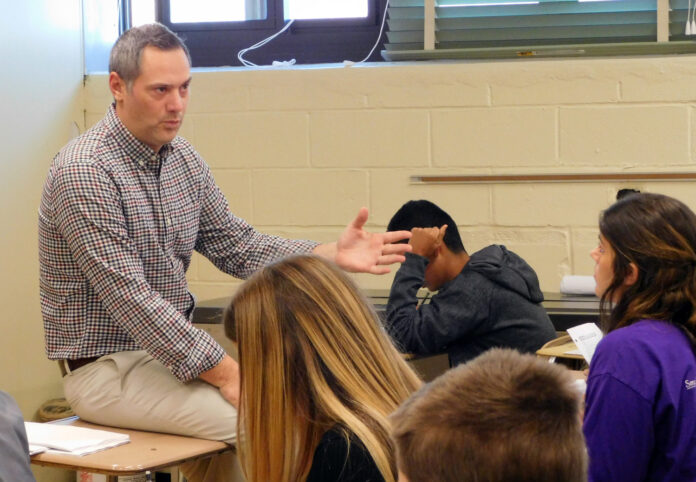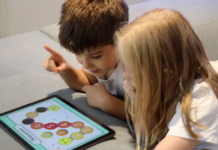By: Erik Hawkins
Published by LiHerald
December, 2017
Part three in the series “Educating the 21st Century Child.”
When educators and experts talk about the state of sex education in 2017, they return again and again to the concept of responsibility. The responsibility they speak of, however, has nothing to do with “safe sex,” the catchphrase so many adults remember from their middle and high school health classes.
Instead, educators talk about social media, an ever-present fact of life in the 2010s that has brought the topics of sexuality, mental health and technology closer than ever before.
“It’s more teaching how to be a good human being now,” said Nora Gelperin, the director of sexuality education and training at Advocates for Youth, a national education organization. “It takes someone with a strong educational background to be able to address more issues of mental health, navigating safely online and a lot of the issues regarding anxiety and depression — how does that show up in your friendships or romantic relationships?”
Gelperin has been teaching human sexuality and training education professionals for more than 20 years and was part of the team that developed a set of national sexuality education standards that has been adopted by 32 states.
“What’s tricky is, the core can get very diluted and reduced to a plumbing lesson when students really want to talk about social media,” Gelperin said. “Students are often way ahead of where the curriculum is.”
Eric Caballero, director of health and athletics in the Bellmore-Merrick Central High School District, agreed, noting that the only school in which students shouldn’t be engaged in frank discussions about sexuality, social media and mental health is “the school of ignorance.”
“More than ever, we need to be honest and realistic in terms of having these conversations with our students,” Caballero said. “In reality, they’re not going to always be at home with us.”
Instant gratification
With the unprecedented level of connection and availability of information that came with the age of smartphones and tablets also came new dangers and potentially volatile situations that can further complicate the already difficult period of adolescence, Caballero and Gelperin agreed.
Also, they said, bullying and breakups have taken on new dimensions, when both can now be done via a simple Snapchat or Facebook posting.
“When that communication is not positive, it creates a slew of other issues for us,” Caballero said, adding that “it’s hard enough being a kid, let alone navigating the hurdles of what social media means when you’re growing up.”
According to a 2015 Pew Research Center study, 92 percent of teens go online daily, and 24 percent admitted to being online “almost constantly.” Most of teens’ online activity goes on within the relative privacy of their cell phones — and nearly 75 percent of teens have them, according to the study.
In 2015, Pew found, only 12 percent of teens reported not owning a cellphone.
“It used to be that you had to at least go to your laptop,” Caballero said. “Now they have access to things with the flick of a finger, and . . . not only does it expose them to things that their parents haven’t had the opportunity to have a conversation with them about, but it also causes complications with their peers that are the end result of access to social media.”
“We live, unfortunately, right now, in a world of instant gratification,” he added.
Drowning in information
Rich Wojcieski, who has taught health in the Bellmore-Merrick Central District for 17 years, said that in recent years, the prevalence of social media in students’ lives has made it a major part of how they talk about their relationships, and the sex-education curriculum has had to adapt.
According to Wojcieski, in addition to role-playing exercises, students now play out scenarios in which they communicate on social media. “That’s what they’re doing most of the day,” he said. “A lot of the times their relationships are through texting and Snapchat and Facebook.”
Also, “even though our students are drowning in information, it’s hard to know what’s trustworthy and accurate,” Gelperin said, noting that she has encountered students in high school who say they have read online that condoms don’t work.
The National Sexuality Education Standards Core Content and Skills, which Gelperin helped to develop, stress that by the end of eighth grade, students should be able to identify accurate sources of information about sexual health, gender expression, and sexual orientation, as well as reproductive health care and sexually transmitted diseases.
Also, in grades six to eight, the standards recommend that students begin being taught how to evaluate the health of a relationship and to develop strategies to use social media safely and respectfully.
“Ideally, we would have undergrad programs that appropriately prepared health teachers with content around sexuality,” Gelperin said, also stressing the importance of ongoing professional development addressing gender identity, rape culture, sexting and misogyny — all of which, she said, show up every day in high schools across the country.
“So I think teachers need a ton of support . . . and a budget,” she said.
Next week: Students struggling with sexual and gender identity.
Source: https://liherald.com/stories/when-sex-education-meets-technology,98305
Why this article: The article as a whole is a very vague summary of the stance and attitude public school teachers have towards sex ed. There are comments made on how connected teens seem to be these days with their phones, but that idea/argument doesn’t lead anywhere important.
Overall, it’s a change of pace from the market-driven approach and a window to how state-run public education views and addresses sex education.





I find these topics of GREAT importance and I think that teaching relevant topics like sex, social media, and relationships is all apart of “health” in general and should absolutely be taught at schools. I also agree that by eighth grade kids should be able to understand what sources are reliable and dishonest when it comes to these adult like topics. I know it is probably difficult to pin point what age it should start being discussed because maturity levels range widely from 12-17 but an effective plan can be put in place for sure.